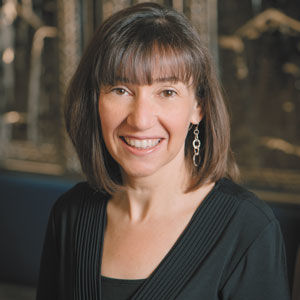Parashat Terumah: Building a sanctuary within
Published February 27, 2020
Just two short weeks ago, in Parashat Yitro, we read of the revelation at Mt. Sinai. Each Israelite – rich and poor, young and old, female and male – experienced the reality of the Presence of God in their lives. Then last week, in Parashat Mishpatim, the Israelites were gifted with an expanded set of mitzvot (commandments) to help them emulate the Holy One in their relationships with one another while living in community. Now, in this week’s portion, Terumah, God tells Moses to have the community create the Mishkan, a sanctuary where God’s presence can dwell among the people.
One question this may raise is, “Why?” Why is this construction project necessary? After all, the Israelites experienced multiple miracles, the Revelation at Sinai, and now have a set of laws that will help them enact holiness on a daily basis. Isn’t it obvious that God is with them, that God’s presence dwells among them, without the creation of this physical structure?
In an attempt to answer this question, Rabbi Shefa Gold has written: “God has brought us out of Egypt, the place of narrow perception, for one reason: ‘to be Your God,’ to exist in holy relationship. For this is the key to freedom: a conscious connection to the reality that lies beneath the surface of things frees us from the bonds of the material world and allows us to expand beyond the arbitrary limits of our particular conditioned perspective. Yet freedom is elusive. When we left Egypt in search of it, we were blocked by the great impossible sea. When we crossed the sea and fled to the wilderness, we encountered within us the enslaving attitudes and habits of rebellion and complaint. And even after we stood at Sinai and received that moment of clarity, we still fell back into the habits of busy mind and cluttered heart.”
ADVERTISEMENT
It is apparently human nature that no matter how many times the Oneness-That-Connects-All-That-Is makes that Oneness known to us, we can only hold onto that awareness momentarily. Eventually we forget this underlying reality and return to the belief that we are completely separate, independent and disconnected from one another and from the One. The instructions to build the Mishkan are a way to remind us of this ultimate truth.
The Torah portion speaks of the Mishkan as a literal, physical creation. And our physical structures, like houses of worship and houses of learning, are certainly still important today. However, in this week’s Torah portion (Ex. 25:8) we also read: “Let them make me a sanctuary that I might dwell among them.” This verse points us to an understanding of a spiritual, as well as a physical construction project.
In reading the portion this week, I am invited to think of ways that I might craft my life as a Mishkan, as a dwelling place for the Holy One. Instead of the physical materials of precious metals, linens and dolphin skins, I turn to spiritual and mindfulness practices. Prayer, meditation, tikkun middot (the cultivation of ethical qualities), Torah study, the regular giving of tzedakah (charity), gratitude journals, and so much more help open my eyes and heart to the Presence and Mystery that infuse my life in every moment.
ADVERTISEMENT
Without these gifts, it is easy to sleepwalk through my days, easy to convince myself that I do not have enough, that I am not enough, or that I am alone. But with these practices I can return again and again and again to the awareness that my mind, my body, my spirit and my life are themselves a Mishkan, a holy place for God to dwell.
Rabbi Andrea Goldstein serves Congregation Shaare Emeth and is a member of the St. Louis Rabbinical and Cantorial Association, which coordinates the d’var Torah for the Light.
















